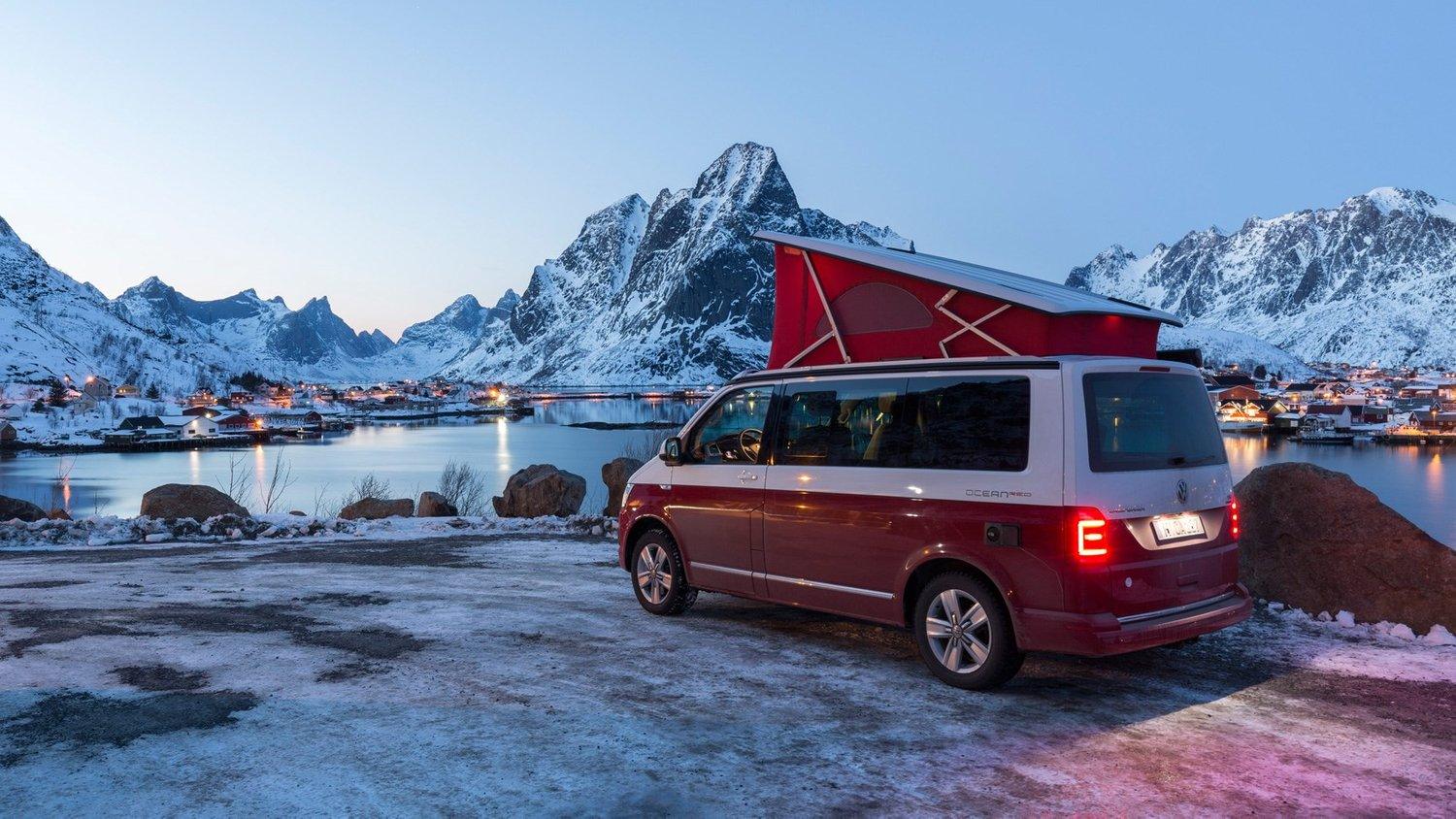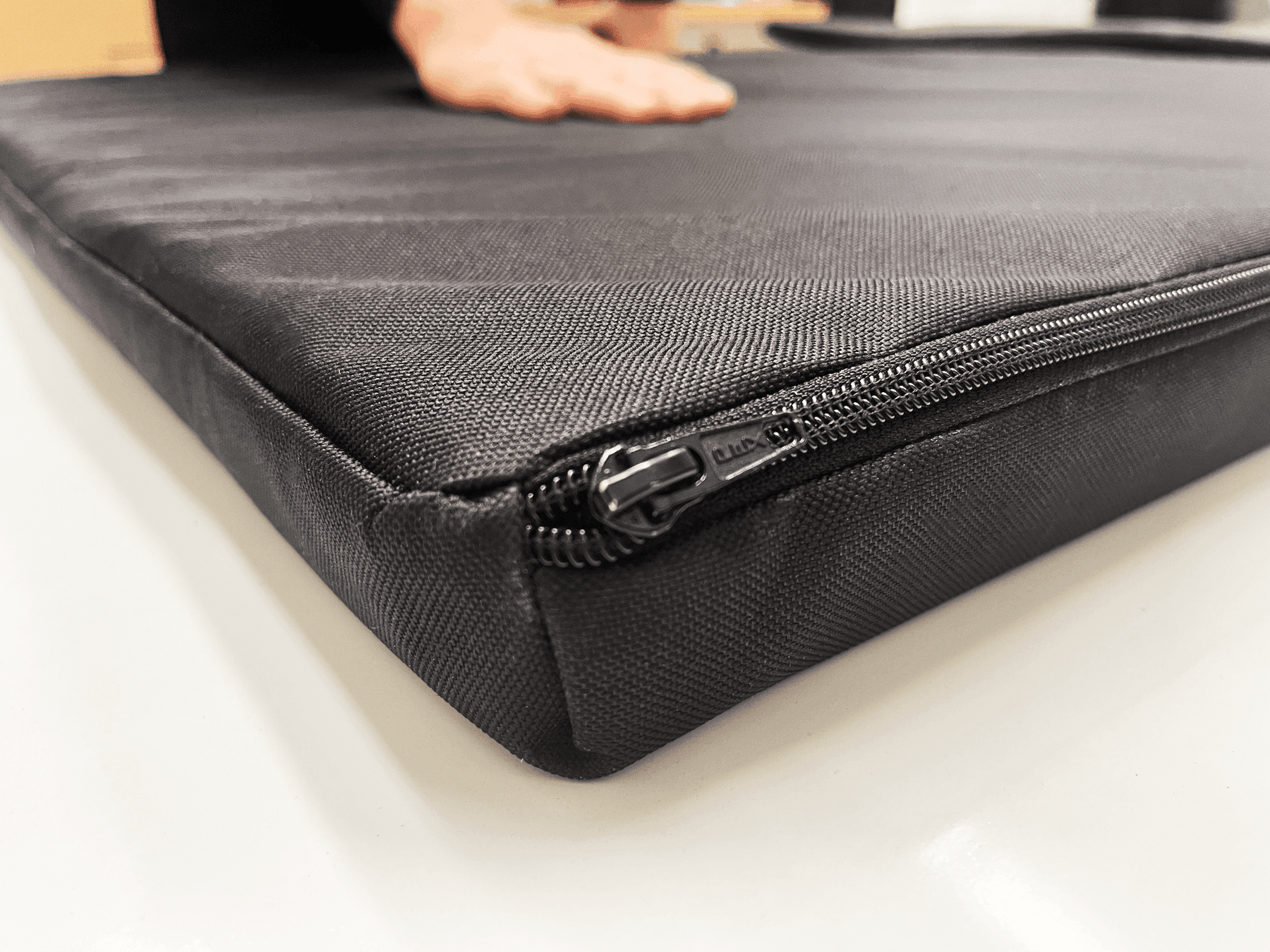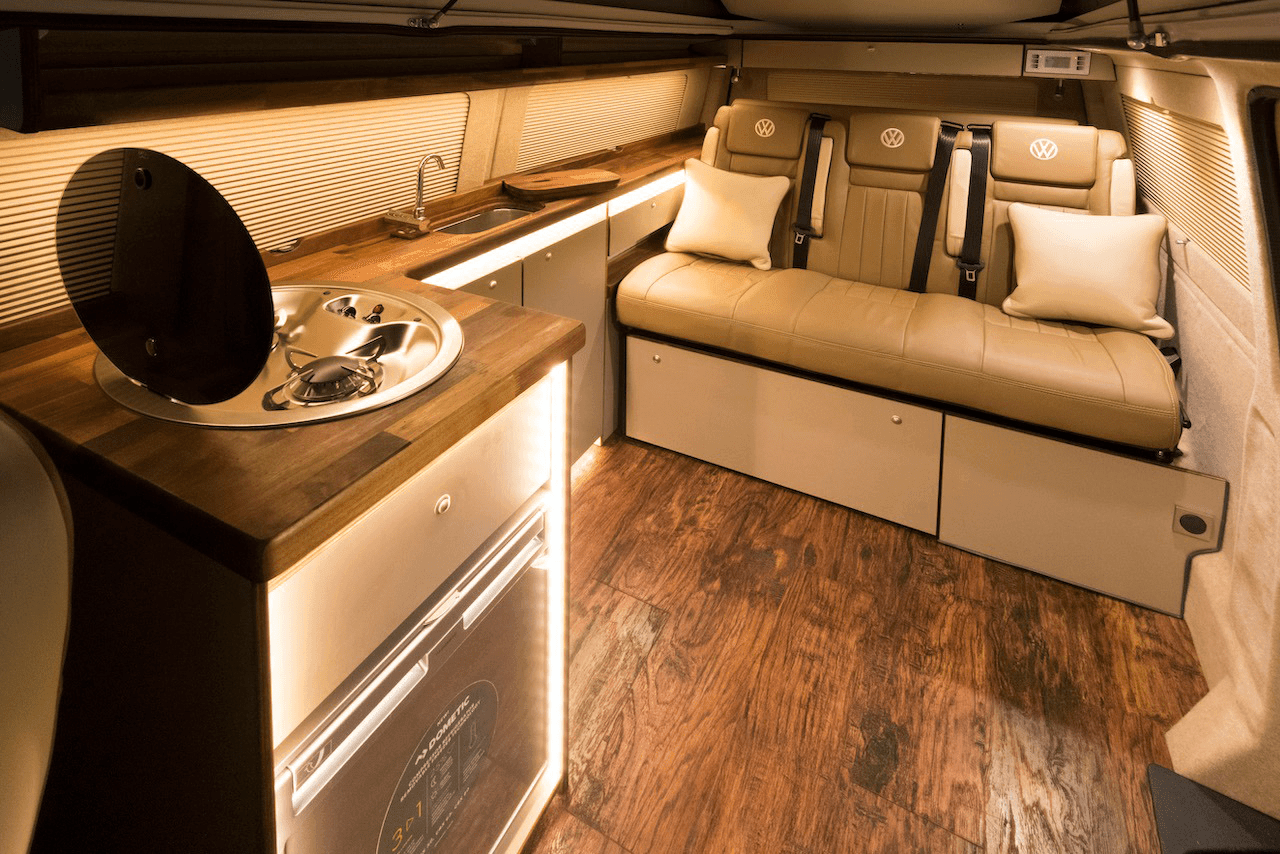The Wildworx guide on winterising your camper or laying up your pride and joy.
If you're like us, you love spending time outdoors and in nature, regardless of the season. You might own a campervan or be considering buying one. But there extra elements you need to take into consideration during the winter. Whether you’re planning on putting your campervan in storage for a few months (laying up), or if you want to continue to go camping all year round.
Here we share with you some tips on how to stay warm in the winter and how to protect your campervan from damage during those cold months.

How to stop condensation in a campervan
Campervans are a great way to explore the outdoors, but they can also be vulnerable to condensation. This moisture can build up on walls and windows, leading to mold and mildew growth. It can also cause paint to peel and fabrics to mildew.
There are a few steps you can take to prevent condensation in your campervan. First, make sure that your campervan is well ventilated. This means opening windows and doors when possible and using a fan to circulate air.
Second, invest in a dehumidifier. This will help to remove moisture from the air, preventing it from condensing on surfaces. If you plan to leave your campervan for long periods over the winter, it might be worth parking it inside a garage. That way, you can run a dehumidifier machine intermittently throughout the winter. You can also purchase disposable dehumidifiers which you can leave in the van to suck moisture out of the air.
Finally, if you notice condensation on walls or windows, wipe it down immediately with a cloth or sponge. By taking these steps, you can prevent condensation from damaging your campervan.
Here are our top tips for stopping condensation in your campervan:
1. Use a dehumidifier
One of the best ways to stop condensation in a campervan is to use a dehumidifier. Dehumidifiers work by removing moisture from the air, which can help to prevent condensation from forming on surfaces. Additionally, dehumidifiers can also help to reduce the risk of mould and mildew growth.
2. Ventilate your campervan
Another way to stop condensation in a campervan is to ventilate it properly. Make sure to open all doors and windows when you are cooking or showering, as this will allow moist air to escape. Additionally, you can also install a roof vent or fan in your campervan to help improve ventilation.
3. Use an anti-condensation paint
If you are looking for a long-term solution to condensation in your campervan, you may want to consider using an anti-condensation paint. This type of paint contains special chemicals that help to prevent condensation from forming on surfaces. However, it is important to note that anti-condensation paint can be expensive and may not be suitable for all types of campervans.
4. Insulate your campervan
Another way to stop condensation in a campervan is to insulate it properly. This will help to keep the inside of your campervan warm, which will prevent moisture from condensing on surfaces. You can insulate your campervan by using insulation panels, blankets, or even newspapers.
5. Cover cold surfaces with towels
If you have any cold surfaces in your campervan (such as metal walls or floors), you can help to prevent condensation by covering them with towels or blankets. This will help to trap heat and moisture, which will prevent condensation from forming on these surfaces.
6. Use a humidifier
If the air in your campervan is too dry, this can also lead to condensation problems. To combat this, you can use a humidifier to add moisture back into the air. This will help to prevent condensation from forming on surfaces and will also help to reduce the risk of mold and mildew growth.
7. Keep your campervan clean
Another way to stop condensation in a campervan is to keep it clean and free of clutter. Clutter (such as clothes, towels, etc.) can create hiding places for mould and mildew, so it is important to keep your campervan clean and organised. Additionally, you should also regularly wipe down surfaces with a damp cloth or disinfectant spray.

Why condensation is a problem in your campervan
Condensation can be a problem for a couple of reasons. Firstly it’s very dangerous to breathe in mould and mildew. Especially for children
If you’re not sure if you need to worry about condensation it might be worth purchasing a humidity metre. You can get them online for under £5. They show you how much moisture is in the air. 50% is considered a healthy environment. Anything over 70% is an issue and can be damaging to health.
Mould becomes very unsightly and can damage the interior of your vehicle. Your pop top roof canvas is very susceptible to mould. It is very difficult to remove mould from these canvases. Often the best course of action for a mould covered canvas is to change the whole thing. This costs between £300 - £1000 depending on the canvas itself and is a pretty fiddly job.
To prevent mould on your canvas try and make sure it is only being put away dry. If it’s raining when you leave a campsite make sure you put it up as soon as it is dry. This will let the moisture escape.
The same applies to your campervan awning. Ensure you put it away dry. Especially at the end of the season.

Habitation check
Good practice of campervan ownership is to undertake a habitation check every year. You take your vehicle to an authorised dealership and they complete a multi-point check of your vehicle. One of the things they check for is dampness. They use a damp metre to check the moisture levels in the walls. This is very important to ensure that the vehicle isn’t rotting in any way, areas like carpeted walls are susceptible to this. This then shows you it is a healthy environment for you to be in.
Wildworx offers an annual habitation check on campervan conversions. Get in touch with our team to find out more.
How to stop dampness in your campervan
There's nothing worse than stepping into a damp, musty campervan after a long day of driving. Not only is it uncomfortable, but it can also be dangerous if you're not careful. Luckily, there are some simple ways to stop dampness in your campervan and keep it dry and comfortable all road trip long.
- Inspect your campervan regularly for signs of dampness, such as musty smells, mould, or condensation on windows.
- If you find signs of dampness, try to identify the source of the moisture and address it immediately. Common sources of moisture include leaks from plumbing fixtures, condensation from cooking or showering, and rainwater entering through holes or cracks in the campervan’s exterior.
- Make sure your campervan is well-ventilated to allow moisture to escape. Open windows and doors when weather permits, and use a fan to circulate air inside the campervan.
- Use a dehumidifier to remove moisture from the air inside your campervan.
- If possible, park your campervan in a covered area to protect it from the elements.
- Inspect your campervan’s roof regularly for leaks, and repair any leaks immediately.
- If you’re storing your campervan for an extended period of time, make sure it is completely dry before doing so. Place a dehumidifier inside the campervan, and consider using desiccant packets or silica gel packets to absorb moisture.
- When using your campervan’s water heater, open a vent or window to allow steam to escape and prevent condensation from building up inside the campervan.
- Avoid drying clothes inside your campervan, as this can add moisture to the air and contribute to dampness.
- If you suspect that your campervan has structural damage from dampness, consult a professional for further assessment and repairs

Campervan winter storage
If you’re a fair weather camper you will be putting your van into some sort of storage over the winter. If you have space, try and keep it indoors. Some companies provide indoor campervan storage. Some even have the option of a trickle charge. This makes sure your vans' batteries are kept healthy over the winter.
- Make sure all windows and doors are correctly sealed to keep out the cold and damp.
- Drain any remaining water from the campervan's plumbing system to prevent freezing and damage.
- Open your campervan taps to drain the system totally
- If possible, store the campervan in a garage or shed to protect it from the worst weather.
- Cover the campervan with a tarp or other waterproof material to keep it dry.
- Remove any food from the vehicle.
- Rodents will make homes inside the vehicle or in the engine bay. Make sure you check for this regularly
- Remove all clothes and other items from the vehicle
- Remove the mattress from the pop-top roof
- Make sure the fridge is clean and disinfected before you shut up for the winter. Mould grows very quickly here
- Add tea bags to the fridge to act as dehumidifiers
- Ensure the canvas is totally dry when it’s pulled down for the last time.
- Look into investing in a trickle charge system
- Remove sat navs or sat nav chips from the vehicle as well as any other valuables
- Before you lay up your vehicle, give it a good clean inside and out with disinfectant
- Ensure the gas is turned off. Especially if storing the vehicle inside
- Check tyres and tyre pressures
- Leisure batteries tend to fail in cold weather. You can remove them from the vehicle and store them inside. Alternatively, they might need replacing anyway; wait until the spring. A new leisure battery is around £150.
By taking these simple steps, you can ensure that your campervan is protected during the winter months and will be ready for another season of adventure when the weather warms up again.
Want to use your campervan in the winter?
How to winterise your campervan
If you’re not afraid of the cold and want to use your campervan all winter, there are a few different ways to make it as comfortable as possible. With a few simple conversions, your campervan can easily be transformed into a cosy winter retreat.
Some of these things need thinking about before you start your conversion. Start by insulating the walls and floors with good quality insulation - like DoDo. Install a good quality and reliable diesel heating system that can be subjected to very cold temperatures. Both Webasto and Eberspacher will do the job.
If you need to have the roof up it can really drop the temperature in the van. In the winter it’s best not to have the pop top up. If you need to then invest in a thermal pop top roof wrap, these are around £300 and really make a difference to the temperature inside your van.
Invest in some thermal blinds for the interior of the vehicle. They make a huge difference to temperature and privacy in the dark winter nights.
If you’re only planning on staying in the UK it’s likely you don’t need any extra snow kit. However if you’re planning a winter trip to the mountains of Europe you will need to invest in snow chains and winter tyres. With a little preparation, your campervan will be ready to take on whatever winter throws your way.
In the UK you won’t be subjecting your systems to anything drastically cold. If you are planning on going anywhere with high altitudes and temperatures below freezing then you need to think about your pipes freezing. You will also need to research at what temperature your battery system will stop working. All these things will depend on lots of factors, and will be specific to your own campervan.
How to properly heat your campervan in the winter?
There are a few different options for heating your campervan in the winter.
- LPG heating system
- Diesel heating system
- Wood burning system
Our recommendation for the most reliable campervan heating systems is the diesel heating option. They are the most cost effective and easiest to use. They are

Are campervans cheaper to buy in the winter?
One question that we get asked alot, is whether it's cheaper to buy a campervan in the winter. The answer depends on a number of factors, but in general, campervans are typically cheaper in the winter months. One reason for this is that purchasing during the off-season can give you more bargaining power with dealers.
Most people only think about buying a campervan in the Spring. Which means there is less competition out there. Buying an older model may be a more budget-friendly option. If you're thinking about purchasing a campervan, doing your research and being aware of seasonal trends that can help you get the best deal possible.
Insulating a campervan for winter living
For many people, the idea of living in a campervan conjures up images of long summers spent exploring the open road. However, campervans can also be a great option for winter living. With a few simple improvements, they can be turned into cosy homes that will keep you warm and dry all season long.
The first step is to insulate the campervan. This can be done by lining the walls and ceiling with insulation material, and sealing any gaps or cracks. Don’t be cheap when it comes to the insulation. This is one area where you get what you pay for. We recommend using a high end insulation like DoDo.
Once the campervan is properly insulated, you can add a heating system and weatherproof your windows and doors. With these simple modifications, your campervan will be ready to withstand even the coldest weather.

How much does it cost to heat a camper in the winter?
Enjoying the chilly weather comes at a cost: heating a camper can take quite a bit of energy. How much it costs to heat a camper in the winter will depend on several factors, including the size of the camper, the climate, and the type of heating system used.
Smaller campers will obviously require less energy to heat than larger ones, and campers in warmer climates will have an easier time staying warm than those in colder regions. Additionally, electric heaters tend to be more expensive to operate than propane ones. All told, expect to spend approximately 0.18p per hour running a Webasto diesel heater in a VW T6.1 campervan conversion.

Wildworx Winter Campervan Ownership
Owning a campervan in the winter doesn’t have to be stressful, cold or expensive. With a bit of preparation you can protect your van and ensure it’s ready to use in the next season. If you have any questions about winterising your campervan, get in touch.





